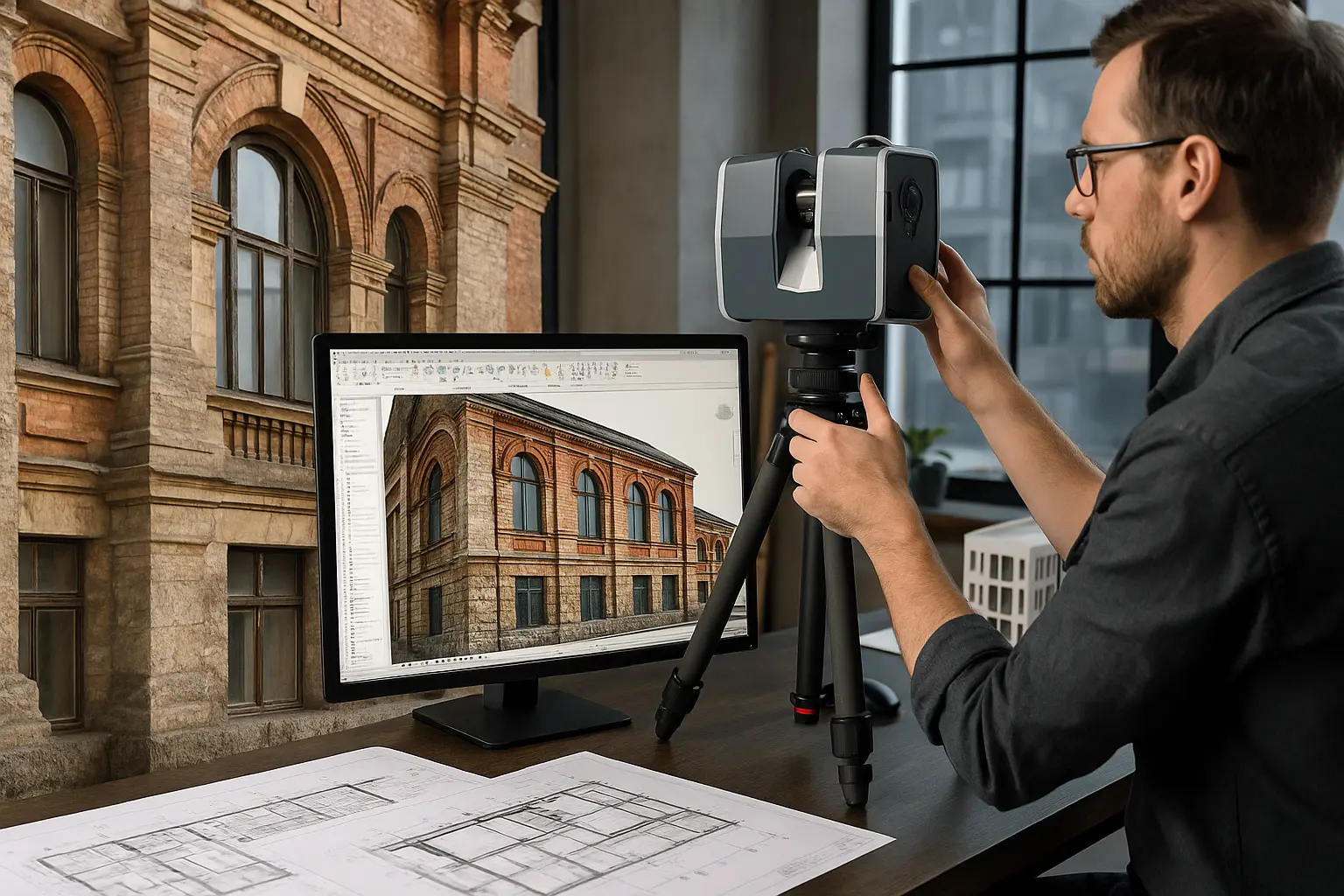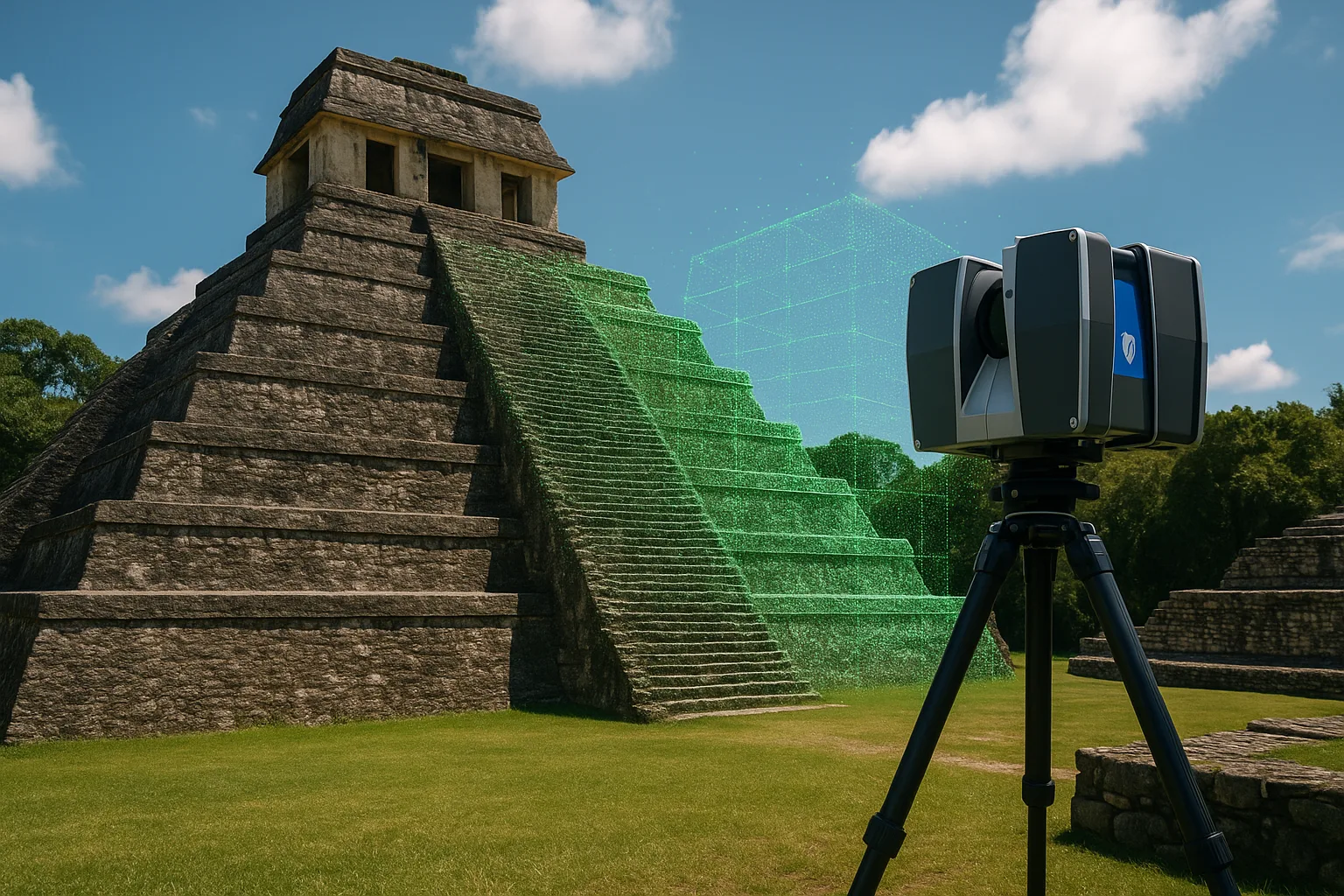Scan to BIM: The Key to Reliable Models in Industrial Projects
Today, the BIM (Building Information Modeling) methodology has transformed how construction projects are designed and managed, especially in the industrial sector. However, for BIM models to be truly effective, it’s crucial to have accurate and up-to-date data on existing structures.
This is where Scan to BIM comes into play, a technology that uses laser scanning to capture the physical conditions of a building or infrastructure in detail and convert them into an accurate BIM model. But why is it key to creating reliable BIM models in industrial projects? In this article, we will explore the benefits of Scan to BIM and how it optimizes the design, construction, and maintenance phases.
What is Scan to BIM?
Scan to BIM is a process that employs 3D laser scanning to capture data from a physical environment, generating a point cloud that accurately represents every detail of the structure.
This point cloud is then translated into a BIM model, providing an accurate and updated virtual representation of the building or infrastructure. This technology is especially valuable in industrial projects due to the complexity and scale of the facilities, where precision is essential for proper planning and execution.
Advantages of Scan to BIM in Industrial
1. Millimeter-Precision for Reliable Models
One of the biggest benefits of Scan to BIM is the precision it offers. Unlike traditional measurement methods, which are prone to human error, laser scanning provides highly detailed and accurate data. This is especially important in the industrial sector, where incorrect measurements can lead to design conflicts, increased costs, and delays.
With Scan to BIM, engineers and architects can work confidently, knowing that the BIM models faithfully reflect the actual dimensions of the environment, minimizing the risk of errors during project execution.
2. Optimization in Renovation and Modernization
Projects Industrial projects often involve the renovation or modernization of existing facilities. In these cases, having an accurate BIM model of the current structure is crucial for properly planning modifications, as it captures the building’s real state, making it easier to identify potential issues before they become obstacles during the construction phase.
3. Error Reduction and Improved Coordination
A reliable BIM model generated through Scan to BIM allows for the early identification of conflicts between disciplines, whether among architects, structural engineers, or contractors. This improves coordination between the different actors involved in the project and minimizes the possibility of issues arising at the construction site.
4. Efficiency in the Project Lifecycle
The precision and detail provided by Scan to BIM not only positively impact the design and construction phases but also improve building lifecycle management. With a BIM model based on accurate data, facility owners and managers can plan more effectively for maintenance, repairs, and future upgrades. This foresight capability contributes to greater operational efficiency and reduces long-term property management costs.
5. Enhanced Collaboration and Access to Updated Data
One of the great advantages of BIM models generated from Scan to BIM is that they enable effective collaboration among different work teams. All parties involved in the project have access to a single, accurate, and updated data source, facilitating communication and decision-making.
Comparison Between Scan to BIM and Traditional Measurement Methods
While traditional measurement methods, such as using measuring tapes or theodolites, have been the standard for decades, Scan to BIM offers advantages that go beyond simple data collection. Below is a key comparison between both approaches:
1. Data Accuracy
2. Process Efficiency
3. Application in Complex Projects
4. Collaboration and Data Management
Conclusion
Scan to BIM is an essential tool for creating reliable BIM models in industrial projects. Its ability to capture precise data, optimize renovation projects, reduce errors, and improve team coordination makes it a superior solution compared to traditional measurement methods. By implementing it, companies can not only improve the efficiency of their projects but also ensure more effective lifecycle management of their facilities, resulting in cost reduction and better resource utilization.
Integrating Scan to BIM into industrial projects is a crucial step toward more precise, efficient, and collaborative construction. Would you like to explore more about how Scan to BIM can improve your industrial projects?
JOIN THE NEW REALITY!



